
Things to See in Tripoli
Overlooking the eastern Mediterranean Sea is the second-largest city in Lebanon, Tripoli. Located 85 km north of Beirut’s capital, Tripoli is the northernmost seaport in Lebanon.
The history of Tripoli dates back to the 14th century BCE. It was the center of ancient trading, Ottoman rule, and Islamic communities. It is the second-highest concentration of Mamluk architecture after Cairo.
In the Arab World, Tripoli is sometimes known as Ṭarābulus al-Sham to distinguish it from its Libyan counterpart, known as Tripoli-of-the-West.
This city has even more meaning to me as it is my husband’s Omar birthplace. This was my first-time visiting Lebanon, and I was excited to see where he grew up and meet some of his extended family and friends.
Here is a list of must-see places in Tripoli.
El Mina
Roaming around the laid-back seaside neighborhood of El Mina is a must-see in Tripoli. The El Mina quarter juts out into the sea and is defined by its relaxed and quaint atmosphere. Buildings are old and beautiful, and there is a tenable small-town feeling, complete with colorful houses, local churches, and charming alleys. Stray from here to the Corniche (sea-walk) to see the Mediterranean Sea.
Our charming boutique hotel was nestled in El Mina, making it an excellent place to take an evening stroll or enjoy a few small coffee shops nearby.

Old Souks
Your first stop in Tripoli should be the old souks. You will feel like you have jumped back to Medieval times as you wander a tangled web of alleyways and stone-vaulted rooms. A frantic maze of jewelry shops, produce vendors, and juice stands can be found here. Various Mamluks, Crusaders, and Ottomans relics are scattered throughout its tight passageways.
There are a total of nine souks for you to explore, with the most notable being the Gold Souk, Attareen (Fragrance Makers), Nahasseen (Copper Formers), Khayateen (Seamstresseses), and the (Saboon Khan) Soap Khan,
While in the Nahasseen, I caught a young man hammering copper, molding it into a large pot. Next door, a brass shop selling coffee grinders and rose water dispensers caught my eye.
It’s a fun place to do some treasure hunting and souvenir shopping!


Sultan Abdul Hamid Clock Tower
The Clock Tower is one of the most popular monuments in Al-Tell square. In the 18th century, the Ottomans constructed it as a gift to the city of Tripoli. The Clock tower has undergone a complete renovation recently with funds from the Turkish government, and the clock is now operational. Next to the Clock Tower, we find” Al Mashieh,” the oldest garden-like park in Tripoli.
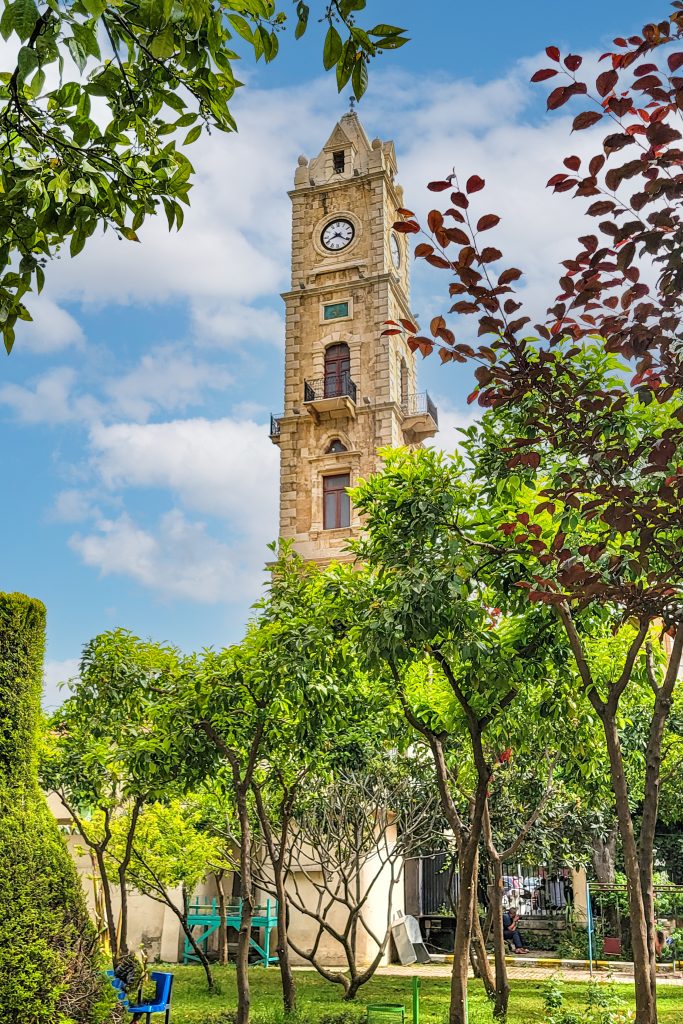
Citadel of Raymond de Saint-Gilles
Tripoli’s Citadel, one of the biggest fortresses in Lebanon, was built by Raymond VI of Saint Gilles, a knight of the very First Crusade, who set out to conquer Tripoli and erected the castle around AD 1100. The citadel overlooks the Abou Ali River and is known for having underground pathways used by leaders to escape. Every ancient staircase leads to a new deck of Lebanon’s past.
Within the citadel is the Northern Lebanon & Akkar Museum, with a collection covering the periods of Hellenics to Ayyubids.
- Admission: 5000 LL
- Hours: Monday – Sunday 10:00 – 16:00
Al Saboun Caravanserai
The Al Saboun Caravanserai served as a central trade station for caravans of camels from Iraq, Persia, and Syria. Here is where they would load up their goods to be shipped via the Mediterranean to Venice, Italy, Egypt, and other destinations.
Today it is known as the Soap Khan, initially occupied by Yusuf al-Saifi, Tripoli’s Pasha in the 17th century. Following the occupation of the Ottoman, the Khan stood empty and useless until it was turned into a soap factory and warehouse. With the help of the Swiss and international aid, the Khan has been restored and continues to house soap products.

The Lion Tower and Train Station
The Lion Tower, Burj al Sabaa, and the old train station are down the Corniche from the Mina neighborhood. The Lion Tower was built by the Mamluks in the 14th century for military use and was constructed using old Roman columns that were laid horizontally to fortify the tower. The famous Orient Express once ran from Homs in Syria to the station in Mar Mikhael.

Street Art
As you make your way around the city, you will find street art telling stories of people’s struggles.
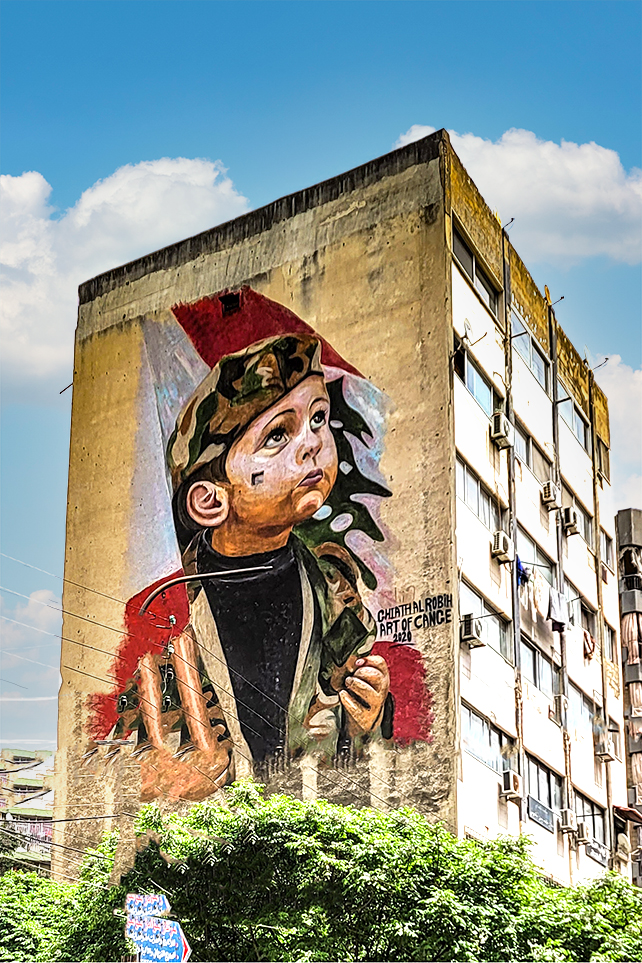

Hammams
Hammam el-Abed
Hammam al-Abed is one of the oldest hammams and is still operating today. Hammam el-Abed was built in the 17th century, and its interior is quite impressive. It has a pierced dome of Mamluk and Ottoman-era public baths.
Beware, it is only for men unless you call to reserve the entire bathhouse for women in advance.
Hammam Al Jadid
By far, the largest hammam in Tripoli is Hammam Al Jadid, built in 1740 and has not been operational since the early 1970s. However, it is the city’s best-preserved establishment. Although the hammam was a gift to the city by Asaad Pasha al Azem, governor of Damascus, no expense was spared in its construction. A huge glass pierced dome dominates the main chamber and brings a dim light to a pool and fountain below.

Churches
Church Street
The Cathedral of St George (Al Mina) is worth visiting. There’s also a church street where you can find the oldest Maronite church in Tripoli, St Michael, built in 1889.
Church of Mar Maroun
One of the biggest Maronite Churches in Lebanon. Beautiful roman architecture by Arigoni of Italian origin. Inside are biblical stained-glass windows.
The Cathedral of St. George (Al Mina)
Built in 1735, the Cathedral of St. George is an impressive building patterned on a Crusader-style basilica church during the Ottoman period. Below the church is an ancient cave whose exact purpose and origins are unknown.



PSST: HERE ARE SOME OTHER BLOG POST YOU MAY WANT TO CHECK OUT WHILE VISITING LEBANON:
DAY TRIP IN LEBANON
TRAVELS TO SOUTH LEBANON
TRAVELS TO NORTHEASTERN LEBANON
LEBANON’S ANCIENT CITY BAALBEK
TRAVELING IN THE BATROUN DISTRICT
BEST OF BYBLOS
JOURNEY INTO THE CITY OF BEIRUT
Mosques
Al Muallaq Mosque “Hanging Mosque”
The hidden mosque is set on top of an arched passageway and is only accessible by a flight of stairs through a tiny door no wider than 1 meter. The interior is quite fascinating and somewhat prominent. Due to the location, it became known as the “Hanging Mosque.“ The mosque was built in 1559 by Mahmud ibn-Lutfi, Ottoman governor of Tripoli, during the reign of Suleiman the Magnificent. The inscription and lettering resemble the late Mamluk period.
Taynal Mosque
Constructed in 1336 in the middle of a large orange grove is an ornate mosque of Emir Seif ed-Dine Taynal el-Hajele. Built on top of the remains of a church that the Carmelite Fathers built at the time of the Crusades. The entrance into the mosque is adorned with multicolored marble marquetry panels with geometric decorations. The inner walls and floors use common motifs from the Mamluk period.
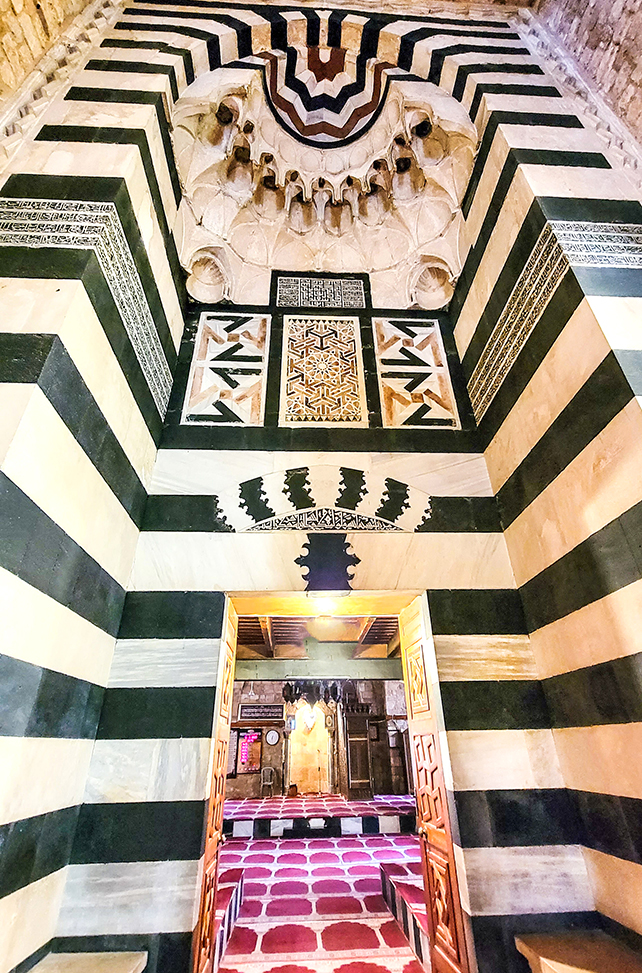

Monsouri Great Mosque
The most notable mosque in Tripoli is the Mansouri Great Mosque, built in 1294 CE. After the destruction of Tripoli in 1289, the Sultan decided to build a new city near the castle of Saint-Gilles. The Monsouri Great Mosque was erected on the gutted Crusader church, once known as Saint Mary’s of the Tower.
The mosque was named after the Mamluk sultan who conquered the Crusaders, al Mansour Qalawun. Remains of Christian architecture are found at the door and the minaret but later was incorporated into the mosque structure. The mosque comprises a court, arcades, fountain, and prayer hall. Attached are six Mamluk, madrasahs, and Islamic schools founded to explain and interpret the Quran.
- Note: Women must be covered to enter or request a cover upon entering.

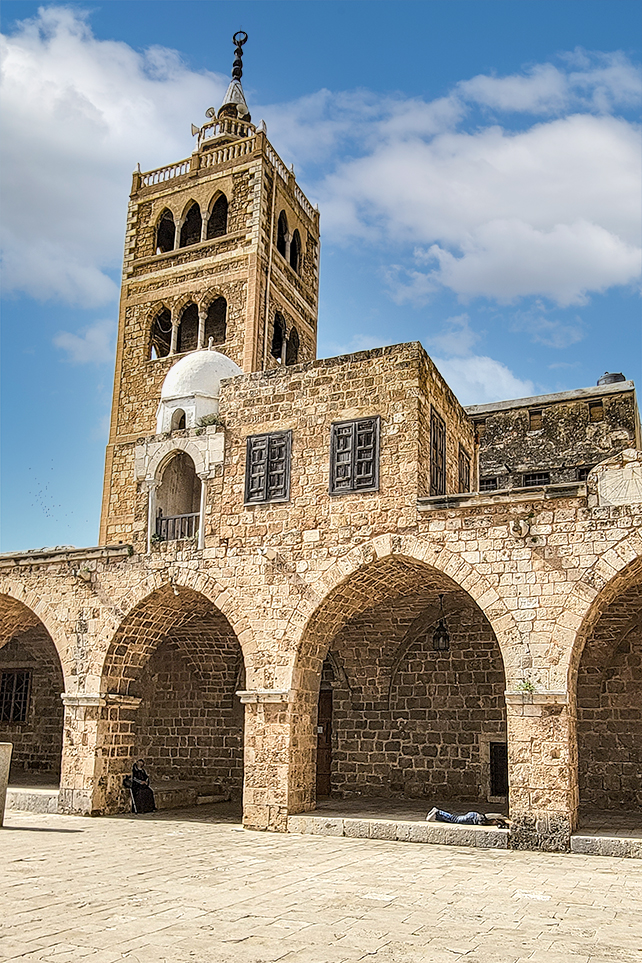
Bourtasi Mosque
The Bourtasi Mosque in the Bab-Hadid (Iron Gate) district was constructed in 1310 CE along the banks of the Abou Ali River. It is one of the most beautiful Mamluk mosques in the Arab world. A marble runner goes from the entry door to the mihrab (where the Imam sits). The ceiling of the arcades is inlaid with colored stones like stars in the sky. In the center is a basin of water set within a multicolored mosaic. It is a complex design of Byzantine, Fatimid, Moroccan, and Andalusian influence, making it one of the most beautiful mosques to visit.

Where to Eat
Dannoun
One of the oldest establishments is the Dannoun Restaurant, known for its hummus, mixed beans, and fatteh. If you are vegan, this is a perfect place for you!

Hallab 1881
Hallab 1881 is considered one of Tripoli’s most renowned landmarks for the creation of Lebanese sweets. People worldwide visit Hallab for the freshest and savory sweets of the Middle East. Their most famous sweets are baklava, kunefe, and maamoul.
Creating delicious recipes is their specialty combined with tradition and unmatched Lebanese innovation. As a result, Hallab 1881 has earned an international standing for high-quality delights. Currently, they operate 12 branches in various cities in Lebanon and the Arabian Gulf region.
In addition to offering sweets, Hallab 1881 has a restaurant within the complex offering delicious tapas and other menu items.
- Hours: Monday – Sunday: 8:00 – 20:00

Ginger’s
Ginger’s offers casual dining with menu options ranging from pizzas, burgers, and salads. The location is here.
Where to Stay
Via Mina Hotel
The charming Via Mina Hotel is the perfect place to rest after sightseeing in Tripoli. Its colorful walls and tasteful decor create an idyllic oasis in the city. Each room is equipped with air conditioning, complimentary beverages and snacks, and toiletries. Via Mina is located in the Al Mina district of Tripoli, making it easy access to restaurants and the boardwalk near the water.

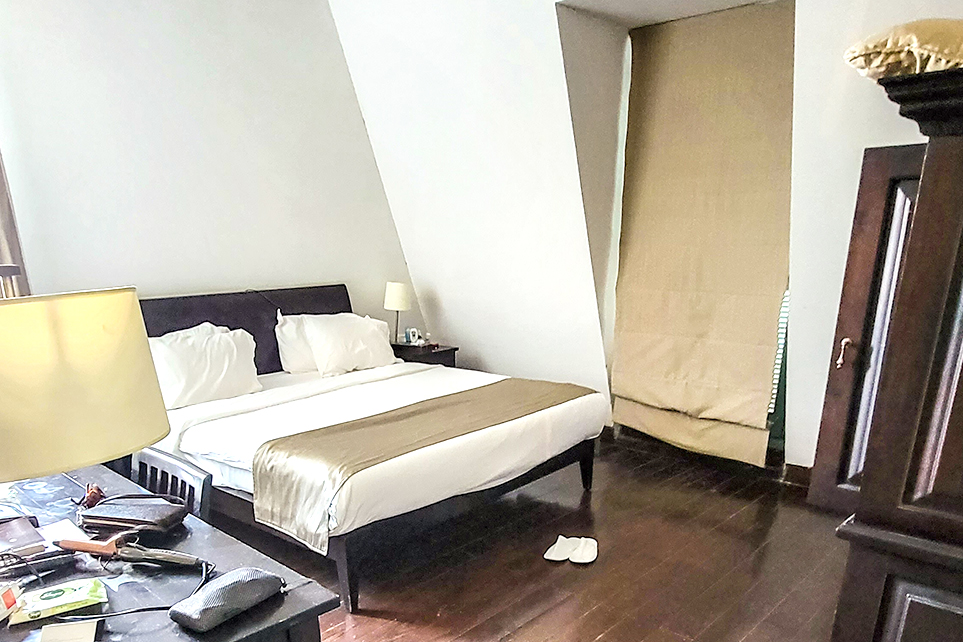

Enjoy your travels! Please read my blogs about other exciting places around the world at Traveling Lens Photography.
If you want to read more follow me on Facebook, Instagram, or Pinterest as I share my journey.
Happy Travels!






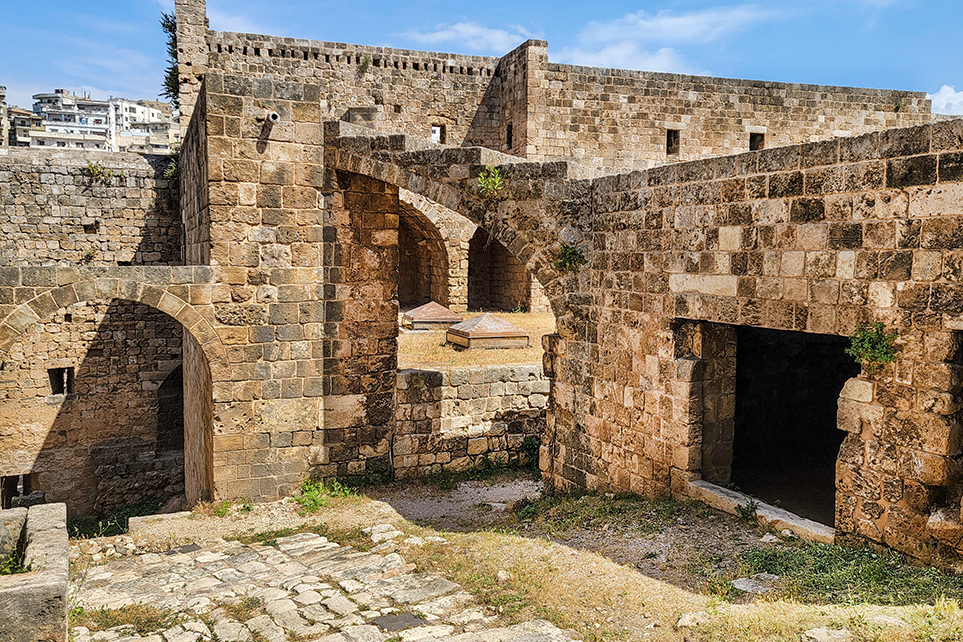
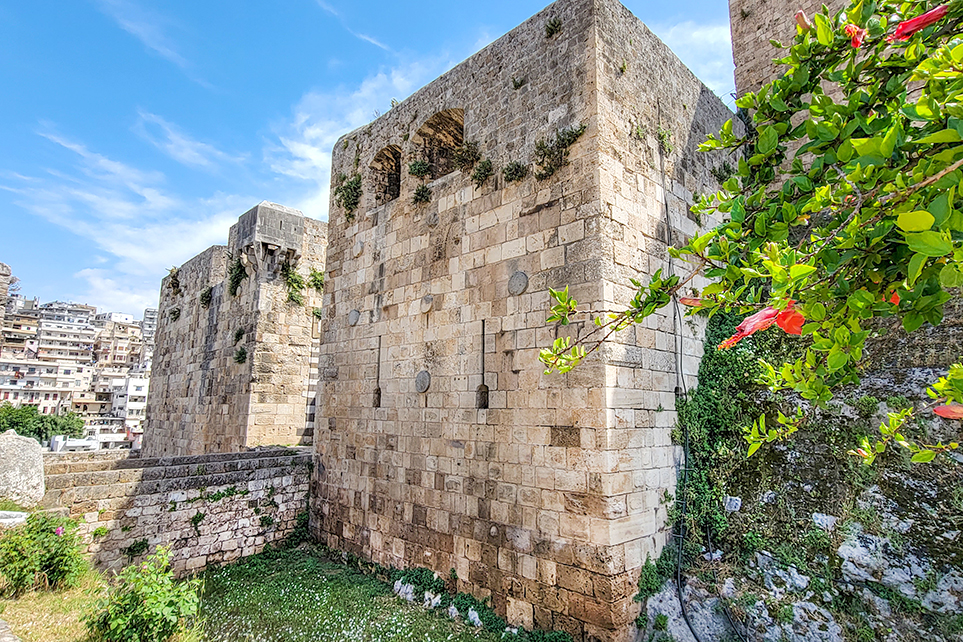





Pingback: Journey into the City of Beirut - Travel blog | Traveling Lens Photography
Pingback: Lebanon's Ancient City Baalbek - Travel blog | Traveling Lens Photography
Pingback: Traveling in the Batroun Distrist - Travel blog | Traveling Lens Photography
Pingback: Best of Byblos - Travel blog | Traveling Lens Photography